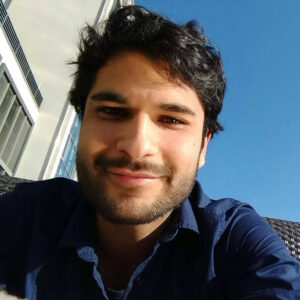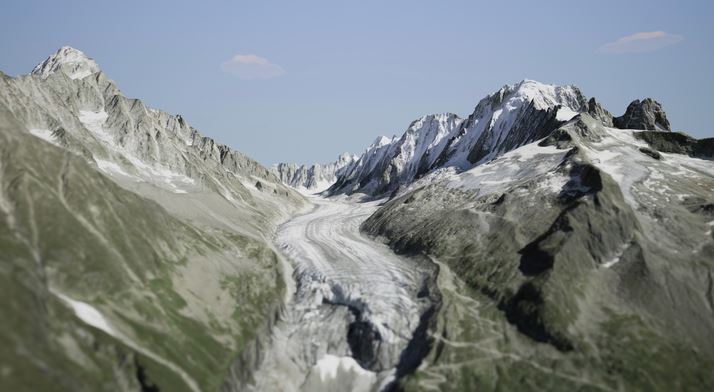When you hear the word puzzles, what comes to mind? It might be a puzzle you have to solve to get to the next stage, a crossword puzzle, or even a puzzle you get from a box. Puzzles can allow you to take from your normal life and routine and just give you some time to rethink and be refreshed for when you finally put the pieces together. But when I heard that the developer, Realities IO had made a game about putting the pieces together using Photogrammetry and Virtual Reality, I had to know more. So I reached out and Shahriar Shahrabi, the game programmer and technical artist was happy to talk about their latest game, Puzzling Places as well as talking about Virtual Reality.




_____________________________________
Interview with game programmer and technical artist of Realities IO, Shahriar Shahrabi
_____________________________________
Welcome to THE VR DIMENSION. Would you please introduce yourself and what you do at Realities.IO Inc?
“My name is Shahriar Shahrabi, I am a game programmer and technical artist in Realities IO. For our latest game Puzzling Places, I have also been acting as the creative director which includes responsibilities like Game Design and Art Direction.”
Growing up, what were the games that influenced you, and what was that one VR experience that you had that you knew you had to work in VR?
“The most influential games for me were those I played with my sister. Games like Bomberman awed me for all the enjoyable hours they provided despite the simple game mechanics. Even single-player games like Robin Hood Legend of Sherwood were things we experienced together. Since those days, games have enriched my life outside of them, as much as they have been enjoyable playgrounds.
The first VR experience that convinced me I wanted to work in VR was the Realities’ experience on Steam. I had worked on VR projects before, but the lack of believability in the visuals in those projects made me unsure of VR’s potential. The first time I tried Realities’ experience, I was struck by the clarity of photogrammetry, the technology used to create the 3D scenes in the experience.”
Your company uses methods such as Photogrammetry to help bring some magic to Virtual Reality such as in the film Home After War. What can you tell us about this technology and its use in Virtual Reality?
“Photogrammetry is a method to capture real places and convert them to explorable 3D environments. It is like taking a spatial photograph of a location. One of the challenges of making visuals for games and films is to make them believable. This doesn’t necessarily mean realistic, but it means everything added to the experience needs to look like it belongs there. Photogrammetry bypasses this problem by the virtue of recreating an exact replica of the real world. Every scratch on the wall is there because of a reason, there is a small story behind every piece of trash on the ground and the viewer can discover them consciously or subconsciously by standing within that virtual environment. This makes photogrammetry a suitable technology for VR, which requires a lot of depth to its visuals, and film projects like Home After War, which are interested in telling the story of a space and by extension the people who occupied it.”
Your newest game, Puzzling Places, has been released on the Oculus Store and PlayStation Store. What can you tell us about the game and the different puzzles within the game?
“Puzzling Places is a relaxing and wholesome 3D jigsaw puzzle game in VR. In the game, you put together hyper-realistic miniatures of beautiful places from around the globe. As you complete each puzzle, the location comes to life with unique and immersive soundscapes. It is meant to be enjoyed by the whole family thanks to its simple gameplay and easy controls. We try to offer a diverse set of puzzles, from giant castles to traditional dresses, covering different cultures and flavors.”

So each piece really comes together with an immersive soundscape?
“The immersive soundscape in our game is bound to different regions in the puzzle. Each piece the player connects contributes to fully puzzling a region. These regions have an associated sound to them, which as the game progresses builds a concrete soundscape of the puzzle the player is playing.”

What can you tell us about the controls and play styles of what the player can expect?
“Designing the game, we made sure you can play the whole game using a single hand and a single button. This makes the controls very simple to learn. On top of that, we offer a series of tools to help the player with organizing their puzzle pieces. People develop their own play style based on the space and mobility available to them. Some walk around the space and organize the pieces spatially and some sit down and group all pieces together before they start puzzling. Either way, we make sure nothing we add gets between the player and the way they want to play the game.”


What has been your favorite puzzle from the game thus far?
“Probably Mont Saint Michel. The location itself is very out of this world and fun to puzzle. I also love the added soundscapes. Although my favorite puzzle might change in the future, looking at the exciting lineup we have ready for the future puzzles.”
What do you feel is the winning formula for creating in Virtual Reality?
“Virtual Reality is in a way a completely new frontier. As far as design is concerned, there are a lot of unknowns. I think the winning formula is to scope the projects small and start figuring out the little things first and scaling things up slowly from there. On the other hand, VR is not in a vacuum. As a developer or a designer, I think it will do good to keep age-old principles of arts in mind and learn from normal 2D games, paintings, films, architecture, and so on and try to reuse some of those principles in new forms in VR.
In your experience, what have you found that works really well and maybe not so well in Virtual Reality?
“Like in all things, I have found simplicity and constraints to work well in VR. Just because you could place a point of interest all around the player, doesn’t mean you should. Virtual Reality has a lot to offer with its added dimension, but if your project doesn’t need to take advantage of that, you shouldn’t add it just because it is VR. As for things that don’t work so well, I would say complexity in player input and interactions. As a game developer used to the high level of game literacy the console and PC gamers have, it is easy to forget that most people would really struggle with simple things like two analog sticks used for spatial navigation. On one side VR is appealing to a larger audience than experienced gamers, on the other even for the more experienced players, a lot of interaction schemes introduced in games are completely new, so keep things simple.”
When it comes to immersion, sound and visuals can make or break the experience. When you are creating a game like Puzzling Places, do you try to balance both out equally or do you favor graphics over sound or vice versa the most?
“We try to scope things in a way so that we don’t have to sacrifice neither visuals, nor sound.”

With an application like Google Earth, do you see any future plans for DLC or updates that will include more Puzzling Places to try to piece together?
“We have already released two new puzzle packs since release and updated the game with one additional free puzzle. Moving forward we will continue to release more free and paid puzzles. So far a potential partnership with Google Earth hasn’t really been a topic, but we are expanding our networks of partners to be able to bring even more interesting puzzles to the players.”

If you could go back in time and tell your younger self three things, what would they be?
“I am not sure I would have anything to say to my younger self but my general advice to those earlier in their careers is: 1) there is a wealth of knowledge recorded down in books in any field imaginable, find the greats in your field and read what they have written 2) keep a healthy work-life balance, no work of art is wort causing yourself or those around you misery 3) diversify your interests and learn about things outside of your specialty.”
This is a two-part question. Do you see Puzzling Places being available for the Oculus Rift/S on the Oculus Store as well as Viveport and are there any plans for an updated version for PlayStation VR 2? And what is next for Realites.io Inc.?
“We would love to bring Puzzling Places to as many people as possible. Regarding any future port or upgrades, we would weigh the cost against the potential gain and decide based on that. As for what is next for Realities, we will continue to make puzzles as long as people would like to play them. We are still not sure if we would like to work on a second game or remain in the tech scene, where our main focus has been the past few years.”
If you walked through the door into THE VR DIMENSION and you were represented as a puzzle, what would you be and from what time period?
“Maybe a Kimono from the Edo era. Anything can go on those things, and as a puzzle, they are challenging, but if you pay attention to the patterns, they are ultimately very rewarding.”
With the content for VR continuing to grow, what would you say to someone as to why they should experience Puzzling Places?
“Puzzling Places appeals to the most fundamental aspect of humanity. The side which constantly attempts to create order out of chaos. When you start with a puzzle, you are lost, you know nothing about the location. Piece by piece, you start knowing the subject matter in the most intimate way. You get lost in the flow, in the positive feeling associated with creative work and making art. Completing a 400 piece puzzle will feel like a meditation and by the time you are done you won’t just know the location, you relate to it in the most personal way. I think people should play Puzzling Places because we designed it so that it enriches their life. It is not a form of escapism, quite the contrary, it brings you closer to the world you live in and that is quite different from how most VR content is made.”

I really want to thank Shahriar for taking time out of their day and for giving us a closer look into Puzzling Places as well as talking about Virtual Reality.
Puzzling Places is out now for the Oculus Quest/Quest 2 on the Oculus Store and PlayStation VR.
To learn more about the game, please visit the site, like them on Facebook, like them on Twitter, and subscribe to their YouTube channel. To learn more about Realaties.io, please visit their site, like them on Facebook, like them on Twitter, and subscribe to their YouTube channel.
Also, check out the Puzzling Places review.
In case you missed the trailer, please enjoy.

